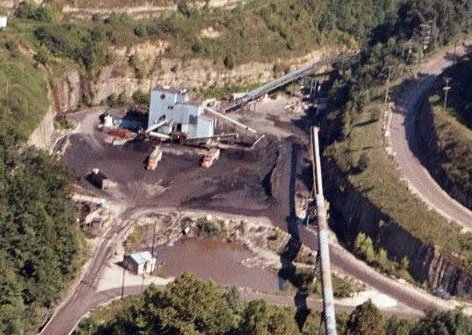Coal Mining Effluent Guidelines

- What is Coal Mining?
- Pollutants and Subcategories
- Coal Mining Detailed Study - 2008
- Rulemaking History
- Additional Information
What is Coal Mining?
Pollutants and Subcategories
Regulated Pollutants
The regulated parameters vary by subcategory, and include:
- Iron
- Manganese
- TSS
- Settleable Solids
- Acidity
- pH (abnormally high or low)
Regulation Subcategories
The Coal Mining Effluent Guidelines apply to wastewater discharges from facilities in six subcategories:
- Coal Preparation Plants and Associated Areas (Subpart B)
- Acid or Ferruginous Mine Drainage (Subpart C)
- Alkaline Mine Drainage (Subpart D)
- Post-Mining Areas (Subpart E)
- Coal Remining (Subpart G)
- Western Alkaline Coal Mining (Subpart H)
Subparts A and F contain General and Miscellaneous Provisions, respectively.
Coal Mining Detailed Study - 2008
The EPA conducted a review of wastewater discharges from coal mines, including a coal industry profile, mine drainage characteristics, treatment technologies and costs. The report was prepared in consideration of possible revisions to existing Effluent Guidelines regulations.
Rulemaking History
2002 Amendment
- Final Rule (January 23, 2002)
- Documents, including:
- Development Document for the Western Alkaline Coal Mining Subcategory
Describes industry processes, pollutants generated, available control & treatment technologies, the technical basis for the final rule, and costs of the rule - Coal Remining Best Management Practices Guidance Manual
Describes abandoned mine land conditions and the performance of BMPs that have been implemented at remining operations. The manual is a technical reference document that presents research and data concerning the prediction and prevention of acid mine drainage
- Development Document for the Western Alkaline Coal Mining Subcategory
- Proposed Rule (April 11, 2000)
1985 Amendment
- Documents, including:
- Final rule (October 9, 1985)
- Proposed rule (May 5, 1984)
1982 Amendment
- Documents, including:
- Final Rule (October 13, 1982)
- Development Document
Industry description, wastewater characterization, treatment technologies, regulatory compliance cost estimates and pollutant loadings for the final rule - Proposed Rule (revisions & corrections) (May 29, 1981)
- Proposed Rule (BPT, BAT, BCT, NSPS) (January 13, 1981)
1979 Amendment
- Documents, including:
- Final Rule (Amended definition of "new source coal mine") (June 27, 1980)
- Final Rule (Precipitation Exemption) (December 28, 1979)
- Final Rule (Clarifying amendment–catastrophic rainfall exemption) (April 2, 1979)
- Original Final Rule (NSPS) and PSES withdrawal (January 12, 1979)
- Proposed Rule (NSPS) (September 19, 1977)
- Proposed Rule (PSES) (October 17, 1975)
1977 Amendment
- Documents, including:
- Final Rule (April 26, 1977)
- Proposed Rule (BPT and BAT) (May 13, 1976)
1976 Amendment
- Documents, including:
- Interim Final Rule (May 13, 1976)
- Development Document
Industry description, wastewater characterization, treatment technologies, regulatory compliance cost estimates and pollutant loadings for the final rule
1975 Initial Rulemaking
- Documents, including:
- Interim Final Rule (October 17, 1975)
- Development Document
Industry description, wastewater characterization, treatment technologies, regulatory compliance cost estimates and pollutant loadings for the final rule
